When choosing a dog to become part of your family, health is undoubtedly one of the most important considerations. Of course, you want to avoid medical costs and emotional distress, but you also want a pet that will be a happy addition to your family.
We’ve gathered this list of the 15 healthiest dog breeds known for being great companions and for their robust constitution, longevity, and minimal health complications. These breeds are sure to bring you plenty of joy, companionship, and peace of mind.
How to keep your dog healthy?
Before we jump into our list of healthiest dogs, let’s look at how you can contribute to the health and well-being of your dog. Even if you choose the healthiest dog breeds out there, there are some things that are essential to ensure your dog remains happy and healthy throughout their life.
-
Exercise
Regular exercise is essential to preventing health concerns and keeping obesity at bay, and will invariably help your dog as they begin to age. The long-term benefits of regular exercise simply cannot be understated. Contrary to the old adage that you can’t teach an old dog new tricks, it’s never too late (or too early) to incorporate an exercise routine into your dog’s life.
-
Mental stimulation and training
Dogs thrive when they get plenty of mental stimulation as well as physical exercise. Puzzle toys, snuffle mats and treat dispensing toys are a great way to give your dog’s brain a good workout.
Other ways to stimulate your dog’s brain include going for walks so they can engage that powerful nose of theirs to sniff around more. You can also hide a treat for them and get them to sniff it out.
Dog training is more than a way to get your dog to obey your commands. As pack animals, dogs thrive with strong leadership and learning. Training can encompass a lot more than ‘sit’ and ‘stay’ and you can really have fun spending time together and teaching your pup some fun tricks.
This will help boost your dog’s confidence, build a stronger bond between you, and help your dog improve its focus.
-
Diet
A balanced and nutritious diet is essential for maintaining health in your best canine pal. The Association of American Feed Control Officials (AAFCO) recommends that the optimal diet for your dog should include water, carbohydrates, vitamins, minerals, fat, and protein. Inadequate nutrition can affect your pet’s heath in many ways.
It’s also vital to ensure you’re not giving your dog too much food, and it’s also a good idea to avoid sharing human food with your dogs as much as possible, as this can lead to weight gain or the consumption of ingredients that may be toxic to dogs.
-
Vet Care
Prevention is always better than cure, and in the case of your canine companion, regular vet visits can go a long way in maintaining health. Annual check-ups can catch any potential health problems early and even prevent them altogether.
Even the healthiest dog breeds still require regular preventative treatments against ticks, fleas, and worms and dental cleaning. Regular deworming and tick and flea prevention are an absolute must.
Even if you take the very best care of your dog, accidents, and injuries can still happen. This is why it’s recommended that every dog owner has some form of insurance to provide cover during those times of need. Whether you take out a full pet insurance policy or dog emergency fund, the peace of mind that adequate cover provides is priceless.
Healthiest dog breeds
1. Australian Shepherd
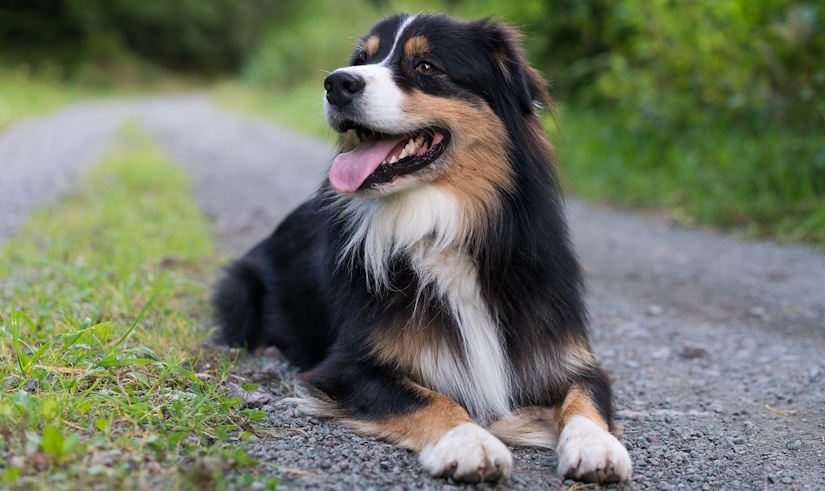
The Australian Shepherd, also known as the ‘Aussie,’ is one of the healthiest dog breeds. This medium-sized dog is fabulous at herding, which requires significant energy, stamina, and superior intelligence. They’re agile and athletic and rarely face health issues.
It’s important to note that your family’s energy needs to match that of your Aussie. Without regular exercise and mental stimulation to keep them happy and healthy, Australian Shepherd dogs will not thrive.
Potential health concerns to be aware of:
- Collie Eye Anomaly and cataracts – regular eye exams are recommended.
- Hip and elbow dysplasia – usually diagnosed by X-ray at around 2years of age.
- Epilepsy – which appears before the age of three and can be managed with medication.
- Anxiety – which shows up as aggression, restlessness or indoor accidents.
2. Beagle
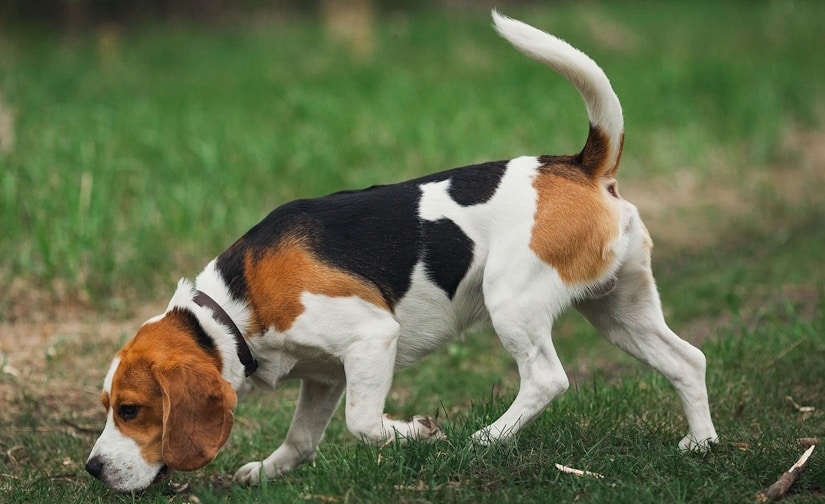
Beagles are lovable, curious, and great with families. They’re a compact breed and very robust, so they tick all the right boxes on the healthiest breed of dog checklist. Beagles love a challenge and a good workout, so regular walks and plenty of play time will ensure they remain fit and healthy throughout their life.
Potential health concerns to be aware of:
- Ear infections caused by their floppy ears limiting air flow to their ears
- Obesity is their exercise needs aren’t met
- Cherry eye, which is usually not painful but can lead to infection. Sometimes, surgery is required.
- Epilsepsy usually shows up between two and five years of age. Signs of a seizure include: loss of consciousness, loss of bowel and bladder control, thrashing
- Hypothyroidism is common in older beagles and leads to metabolic changes. Skin and coat changes, weight gain are signs.
3. Border Collie

Border Collies are known for being one of the most intelligent dog breeds and one of the healthiest dogs. Not for nothing, are they a popular choice as working dogs. This means they need to be kept stimulated and physically fit. Collie will thrive with an active and energetic family who can devote plenty of time to play.
Potential health concerns to be aware of:
- Hip dysplasia is common but easy to detect early on with an X-ray.
- Epilepsy is hereditary in Border Collies but can be managed well with medication.
- Collie Eye Anomaly is hereditary and usually present from birth.
- Imerslund-Gräsbeck Syndrome is a disorder where vitamin B12 cannot be absorbed in the gut, leading to a deficiency.
- Neuronal Ceroid Lipofuscinosis is the result of a genetic mutation. Neurological symptoms of this are usually picked up in the first two years. Genetic tests are available so breeders can avoid breeding with affected dogs.
4. Chihuahua
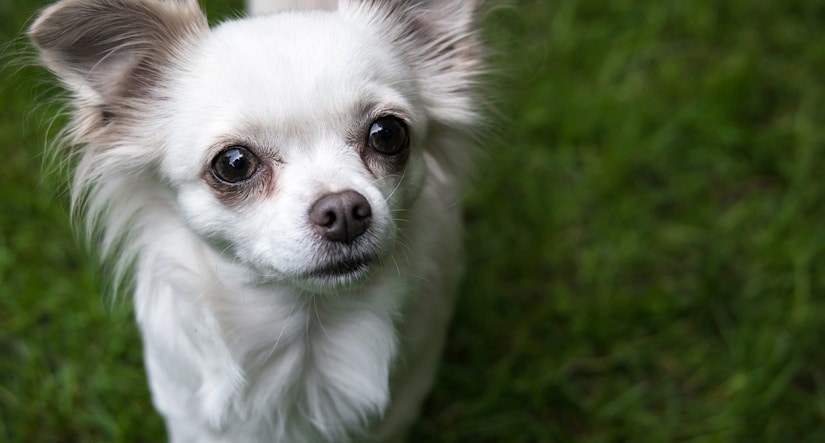
Chihuahuas may be small in size, but they’re big on personality and surprisingly robust for their size. When properly cared for, these pint-sized pups can live long and happy lives with their family. One area where they need particular care is their teeth. Dental issues are common in Chihuahuas, so regular dental check-ups are a must.
According to the Chihuahua Club of America, owners are encouraged to be aware and proactive for other health complications and work with their vet to prevent these: cardiac issues, patellar luxation, and eye conditions (particularly in old age).
Potential health concerns to be aware of:
- Luxating patella is hereditary and refers to the dislocation of the kneecap. This can be picked up in the first few months of life. In extreme cases, surgery may be required.
- Hypoglycemia, or low blood sugar, can lead to weakness, disorientation, and drowsiness. Diet and medication can manage this.
- Tracheal collapse can cause trouble breathing and a honking cough. Proactive treatment is essential.
- Bladder and kidney stones are common in older Chihuahuas. They usually pass on their own but can lead to serious blockages.
5. Dalmatian

The distinctive spottiness of Dalmatians and their Disney fame has made this breed perennially popular. Overall, Dalmatians are one of the healthiest dog breeds, but this depends on responsible practices being followed in their breeding. Always ensure you’re getting your Dalmatian from a reputable and responsible breeder.
Potential health concerns to be aware of:
- Urinary stones can be common. Luckily there’s a DNA test to test for this. Lifelong dietary changes are commonly prescribed as a preventative and in severe cases, surgery is required.
- Deafness in one or both ears is possible in Dalmatians. Special training, using hand signals instead of voice commands, can assist.
6. German Pinscher
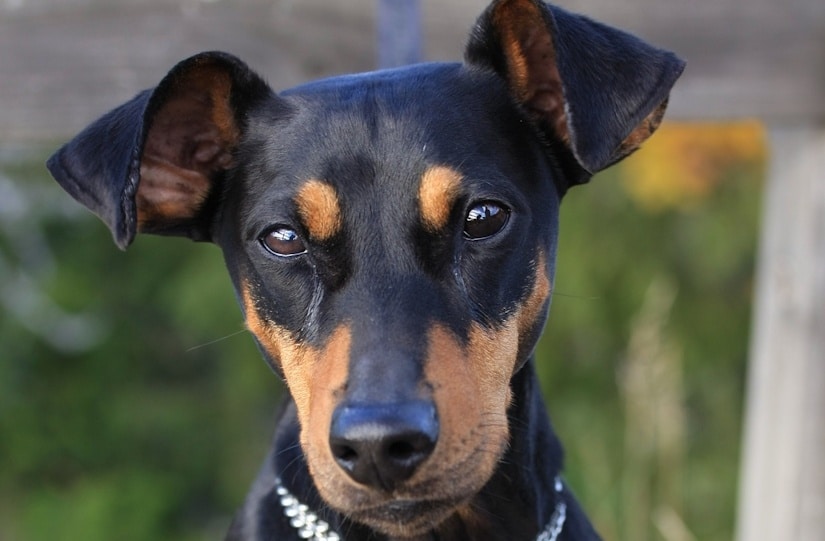
German Pinschers are medium-sized dogs with plenty of energy and relatively few hereditary health conditions. Keeping these dogs happy and healthy is as easy as devoting plenty of time daily to giving them a good workout.
Young children and German Pinschers could be problematic as this breed likes to retreat and have some alone time. If you have older children, a German Pinscher is an excellent option for those looking for a dog with the least health issues.
Potential health concerns to be aware of:
- Hip dysplasia is common in German pinschers, but adequate nutrition and regular exercise can support their skeletal system.
- A predisposition for cataracts requires regular eye check-ups and proactive treatment to prevent irreparable damage.
- Von Willebrand’s disease is a deficiency in a protein that assists blood in clotting. This usually becomes apparent later in life and treatment is limited to transfusions.
7. Golden Retriever

Known for their warm, friendly, and gentle nature, Golden Retrievers are also one of the healthiest dog breeds. They can be prone, especially in their older years, to some joint issues, so maintaining a healthy weight and providing joint supplements can be helpful.
Potential health concerns to be aware of:
- Retreivers are known for being prone to hip dysplasia. It’s genetic and so can be bread out so it’s good to verify this with your breeder before getting a puppy.
- Hypothyroidism can lead to lethargy, weight gain, and a lower body temperature. Medication and dietary supplements can assist.
- Bloat commonly occurs in breeds with deep, narrow chest. It can be potentially life threatening in serious cases. Smaller, frequent meals can help prevent bloat.
8. Greyhound
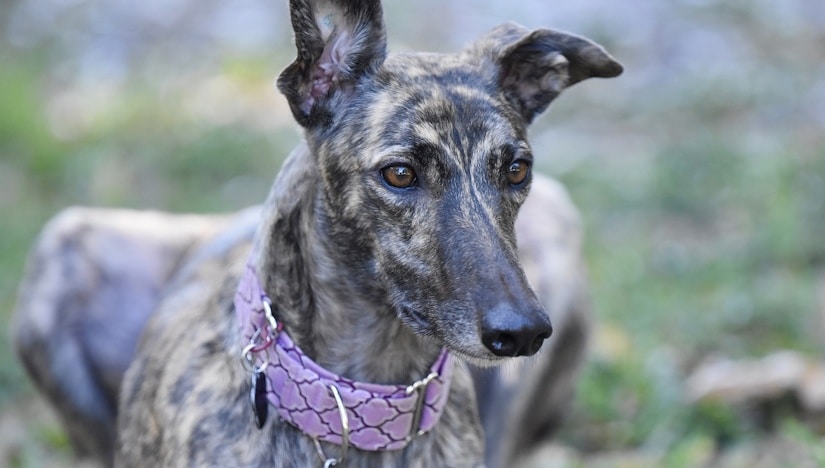
While Greyhounds are known as racing dogs, they make great family dogs too. They’re surprisingly low-maintenance – their short coat requires minimal grooming – and they’re blessed with overall good health. Of course, running is in their blood, so they’ll need plenty of opportunities to stretch their long legs on walks and runs to maintain their healthiest dog breed status.
Potential health concerns to be aware of:
- Bloat is common because of the anatomy of greyhounds.
- Bone cancer, or Osteocarcoma, is likely in older Greyhounds and should be treated as early as possible.
- Heart murmurs and high blood pressure are also common in Greyhounds. Regular veterinary check-ups can help detect these early.
9. Labrador Retriever
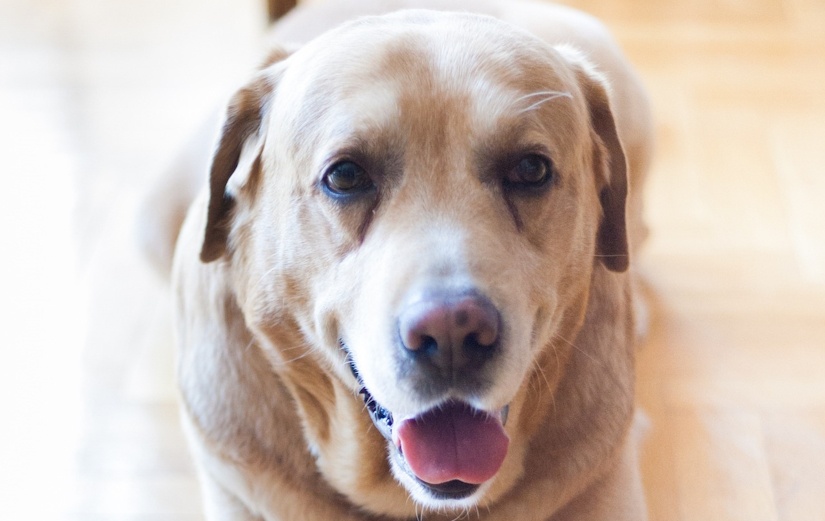
These affectionate and outgoing dogs make excellent family dogs. They’re great with children, and their loyalty makes them wonderful companions. They can become a bit round (especially as they age) if they aren’t well exercised and given a balanced diet.
Potential health concerns to be aware of:
- Their deep love of food and eating mean that Labrador retrievers are prone to weight gain. Carefully managed nutrition and plenty of exercise can prevent this.
- Hip dysplasia is common and so, before purchasing a puppy, make sure to ascertain from the breeder their screening practices.
- Ear infections are common in Labradors because their delightfully floppy ears can trap dirt and moisture in the ears. Regular ear cleaning and hygiene are esesntail in preventing infections.
- Bloat can be avoided by ensuring that you feed your dog smaller, regular meals and avoiding exercise immediately after eating.
10. Maltese

Maltese are popular companion dogs. They are small in size, making them great for families who only have a little space to work with. In addition to their charming personality, these dogs are largely free from major health concerns. One point to note is that they do require regular grooming to maintain their lovely coat.
Potential health concerns to be aware of:
- Tooth and gum problems are common in small breeds with small mouths, prone to overcrowding.
- Asthma, and other respiratory conditions, are common in Maltese, usually in response to an allergen. Early detection and proper medication can manage the condition well.
- Collapsed trachea, once detected, can be treated with medication and preventative care.
11. Pembroke Welsh Corgi
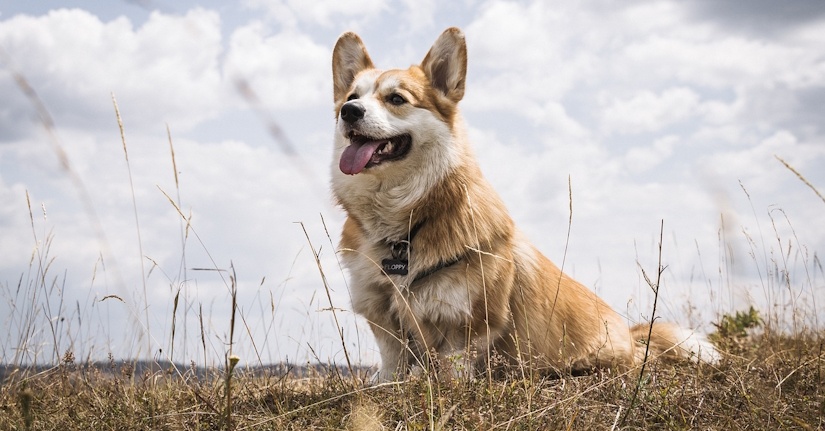
Corgis are utterly adorable with their large ears, fluffy butts, and short legs. And they’re one of the small breeds of dogs with the least health issues. Regular moderate exercise and a good diet will ensure they stay in tip-top shape.
Potential health concerns to be aware of:
- Hip dysplasia can be treated using medication, but in severe cases, surgery may be the only option.
- Von Willebrand’s Disease is a blood clotting disease common in corgis. A blood test can be used to screen for this disease so you and your vet can take any necessary precautions.
- Degenerative Myelopathy is a neurodegenerative spinal cord disorder that starts in the hind legs and deteriorates progressively into full paralysis. There is no cure but physiotherapy can slow the progression.
12. Shih Tzu

Shih Tzu’s are friendly and affectionate little dogs with few health concerns. They have a long coat requiring regular grooming, but this coat is more like hair than typical dog fur, making this breed ideal for families who may suffer from dog allergies.
Potential health concerns to be aware of:
- Breathing problems are a common affliction of dogs with flattened faces (also known as brachycephalic breeds). Weight management is important in these breeds and in severe cases, surgery may be required.
- Patellar luxation, or the dislocation of the kneecap, is common in Shih Tzus.
- Those big protruding eyes make these dogs susceptible to various eye problems and injuries.
13. Siberian Husky
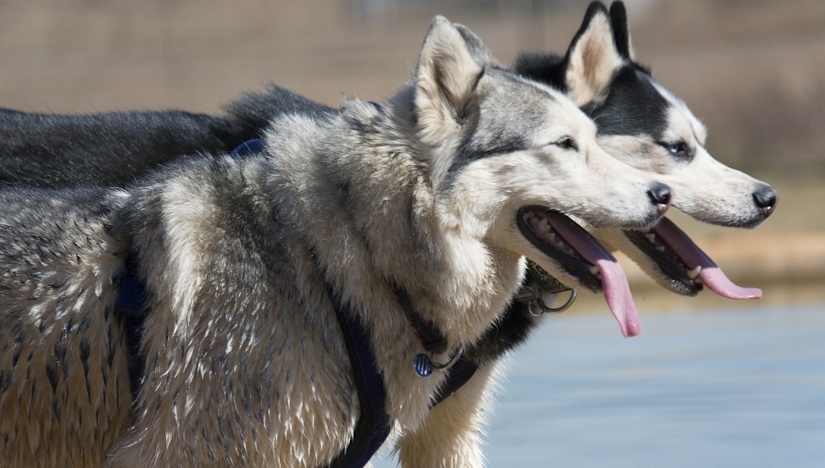
Strikingly beautiful, the Siberian Husky is a popular breed of dog. They’re very resilient and typically free from common genetic disorders. Huskies are an active breed, so they’ll suit an active family best if they’re to stay fit. They are happiest when in colder climates.
Huskies may be predisposed to developing cataracts, even in their younger years, so owners should be proactive with eye health. Aside from that, they’re one of the healthiest dogs.
Potential health concerns to be aware of:
- While cataracts develop commonly in older dogs and humans, huskies are prone to developing these as early as 6 months. These can be surgically treated.
- Other eye problems that affect this breed include corneal dystrophy, glaucoma and progressive retinal atrophy.
- Hypothyroidism is a common condition that results in weight gain, coat and skin problems and even behavioral changes.
14. Standard Poodle

Poodles are highly intelligent and versatile dogs, with the standard variety being the healthiest of the three sizes. Regular mental stimulation and exercise are vital for their well-being.
While this breed is adorably fluffy, they rarely shed and are considered hypoallergenic – great news for anyone with dog allergies.
Potential health concerns to be aware of:
- The shape of this breed’s torso makes them prone to developing bloat. Awareness of this risk can help with avoiding the condition.
- Addison’s Disease is a condition of the adrenal glands that’s typically hard to spot. Blood tests and regular check-ups can help identify it though, after which it can be managed through medication.
- Thyroid issues are common in poodles of an older age.
15. Vizsla
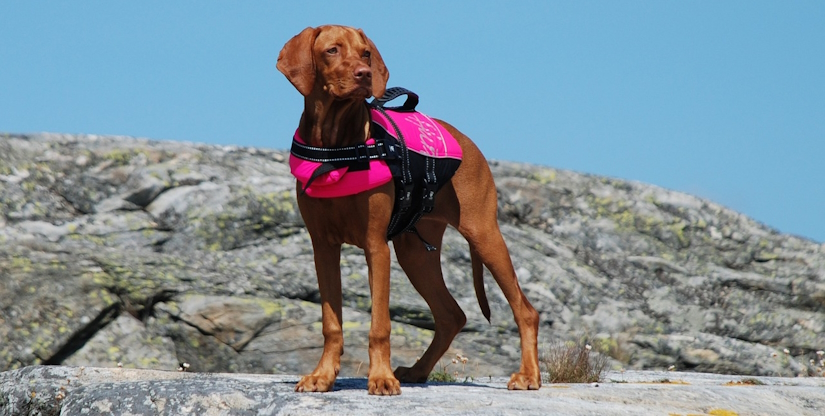
Vizslas are gentle and affectionate and known for their boundless energy and love of physical activity. Regular mental stimulation and plenty of exercise are a necessity to ensure that these dogs don’t become bored, leading to behavioral issues. Families looking for the healthiest breed of dog will be more than satisfied with a Vizsla.
Potential health concerns to be aware of:
- Progressive Retinal Atrophy is a deterioration of the retina which can lead to gradual loss of eyesight.
- Hypothyroidism can cause weight gain, lethargy, and skin changes. While it isn’t curable, the disease does slow down with medication.
- Epilepsy in vizslas is not uncommon. Medication and lifestyle changes can ensure a good quality of life for your dog.
- This breed is susceptible to hid dysplasia. Most cases can be managed well with nutritional supplementation, weight management, and medication, and in severe cases, surgery may be required.
Lifestyle considerations when choosing a family dog
While overall health is an essential factor in choosing a dog breed for your family, your lifestyle can impact your dog’s health.
-
Costs
Consider the costs of the breed that aren’t immediately apparent. In addition to the cost of a vet visit every year, things like regular grooming must be considered, particularly in breeds with a continuously growing coat, like poodles, Maltese, and many more.
Things like grooming may sound frivolous but can impact your dog’s health if not adequately factored in. For example, larger dogs tend to pose a problem with nail trimming being a little more challenging to tackle on your own. But if this isn’t done, you can end up with significantly more costly vet bills when the nails tear or get infected.
-
Space
The size of your dog must be suitable for your home. If you live in an apartment or a smaller house, perhaps consider a small to medium-sized dog over something larger. Also, consider green space. Some dogs are very active and would require a big yard to run around in, but other breeds are more than happy with an occasional visit outside. At the very least, you’ll need to find a nearby outdoor area for your dog to do its business.
-
Climate
Your dog’s health can be impacted by the climate in which you live. While Siberian Huskies are beautiful dogs, they simply do not thrive in hotter climates. They’re snow dogs and will suffer from higher temperatures. Similarly, dogs with long snouts and short coats tend to struggle in cooler climates.
-
Energy
Your dog’s energy and activity level should match your own. If you want a dog that can hit a 10km trail run with you, you’ll need to look for a breed that will enjoy that. Getting a highly active breed when you’re more of a lie-on-the-couch person will result in a bored dog, not to mention one that may tend towards unhealthy weight gain and boredom-related behavioral issues.
-
Temperament
Some dog breeds are just better with younger children than others. If you have or plan to have toddlers and very small children in your home, you don’t want to worry about your dog snapping or losing patience with your little one. Look for a breed that is known for being good with children.
What about breeds that live the longest?
Ask anyone who has ever loved a dog, and they will tell you that the only downside to getting a dog is that they don’t live as long as we do. Some dog breeds have longer lifespans, while others don’t.
Generally speaking, the healthiest dog breeds tend to live longer, but there’s been a lot of research in the area of life expectancy among canines. Studies have found that, on average, the age of death due to natural factors is around 12 years and eight months. Only about 8% of dogs live longer than 15 years.
Typically, the larger the dog, the faster they tend to age and, therefore, the shorter their life expectancy.
Proper vet care, exercise, and a good diet can only go so far as to extend the lifespan of your dog. There’s some evidence that neutering/spaying can lead to a longer life in dogs, but nothing concrete.
Final thoughts
When choosing a furry friend for your family, choosing a healthy dog breed is essential. We’ve looked into the 15 breeds that are widely known for their robust constitution, minimal health issues, and overall compatibility with family life.
Healthy dog breeds start with responsible breeding, and when combined with regular exercise and a balanced diet, you can ensure your dog’s longevity and well-being. By welcoming one of these healthiest dog breeds into your home, you’ll gain a loyal and loving companion and enjoy the peace of mind that comes with a happy and healthy furry family member.